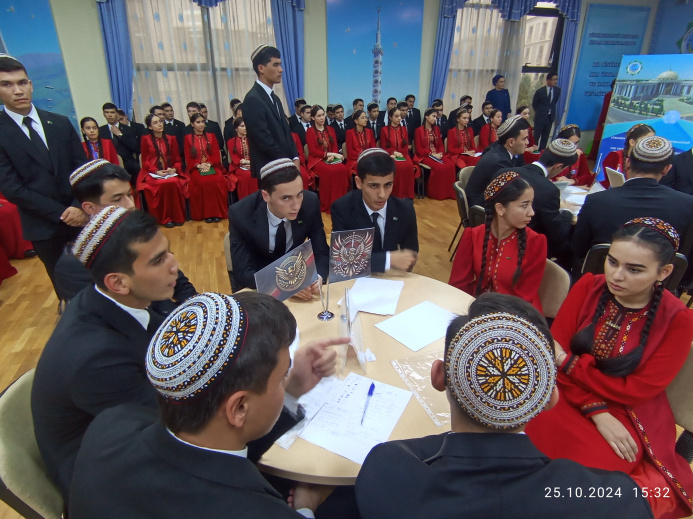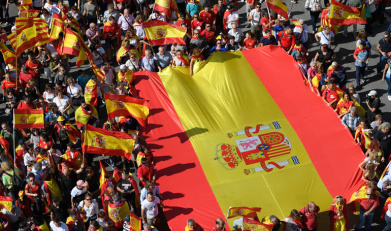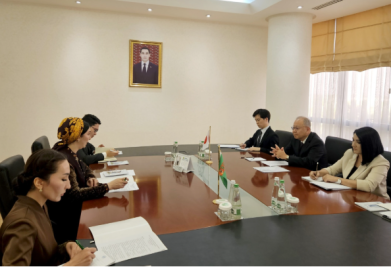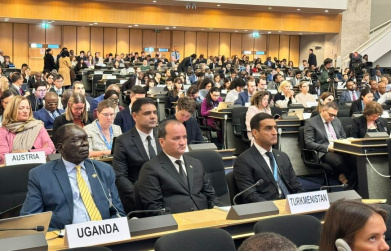Brain-ring dedicated to the 79th anniversary of the UN - new perspectives from youth
25.10.2024 | 21:40 |Brief history
In the 21st century, the United Nations is actively working to ensure peace and security, provide humanitarian assistance to those in need, and protect human rights and international laws according to the UN Charter. The UN Charter was developed by representatives from the USSR, Great Britain, China, and the United States during meetings held from August to October 1944 in Dumbarton Oaks (USA). On 26 June, 1945, representatives from 50 countries signed the Charter at a meeting in San Francisco (USA), and it came into effect on October 24, 1945. This day was declared as United Nations Day.
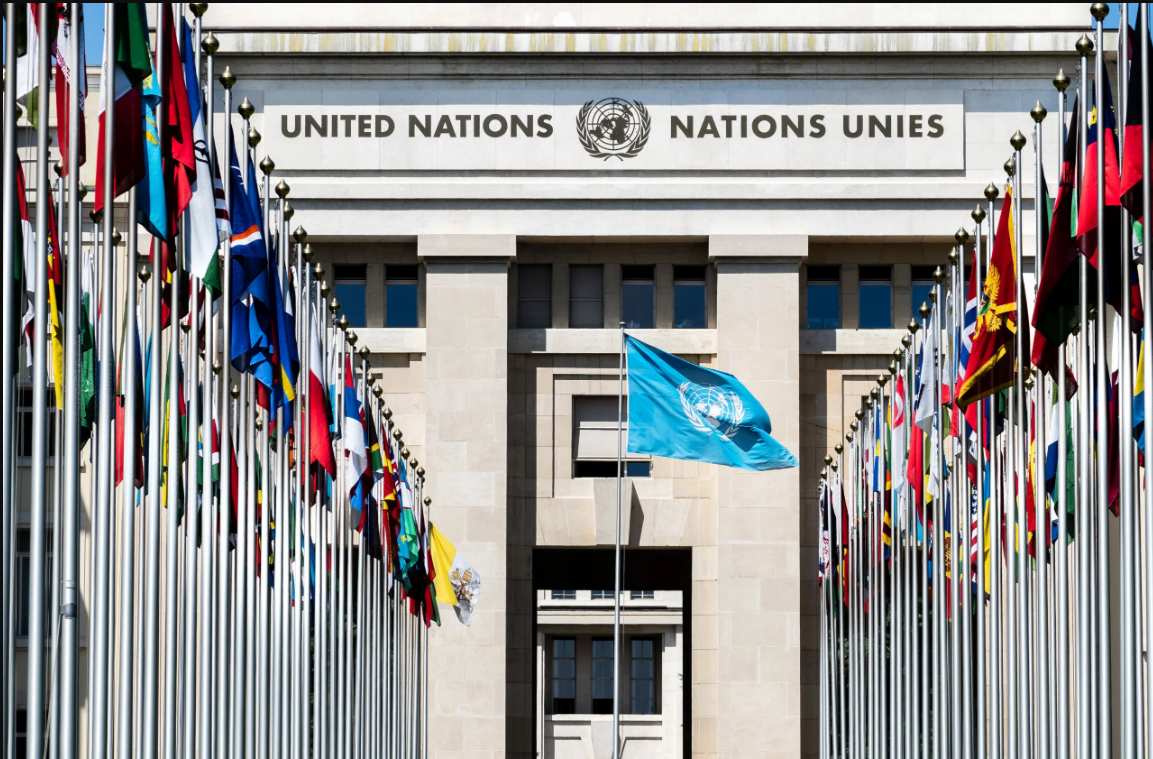
At the same time, the United Nations is involved in many issues not specified in the Charter. The most significant of these are the Sustainable Development Goals: eradicating poverty, preserving planet Earth, improving social standards and tackling global challenges for a bright future for all humanity....

Turkmenistan pays great attention to multifaceted cooperation with the United Nations in the international arena. Involving youth in the issues of these relations and raising their awareness in this area is a basic requirement of our time.
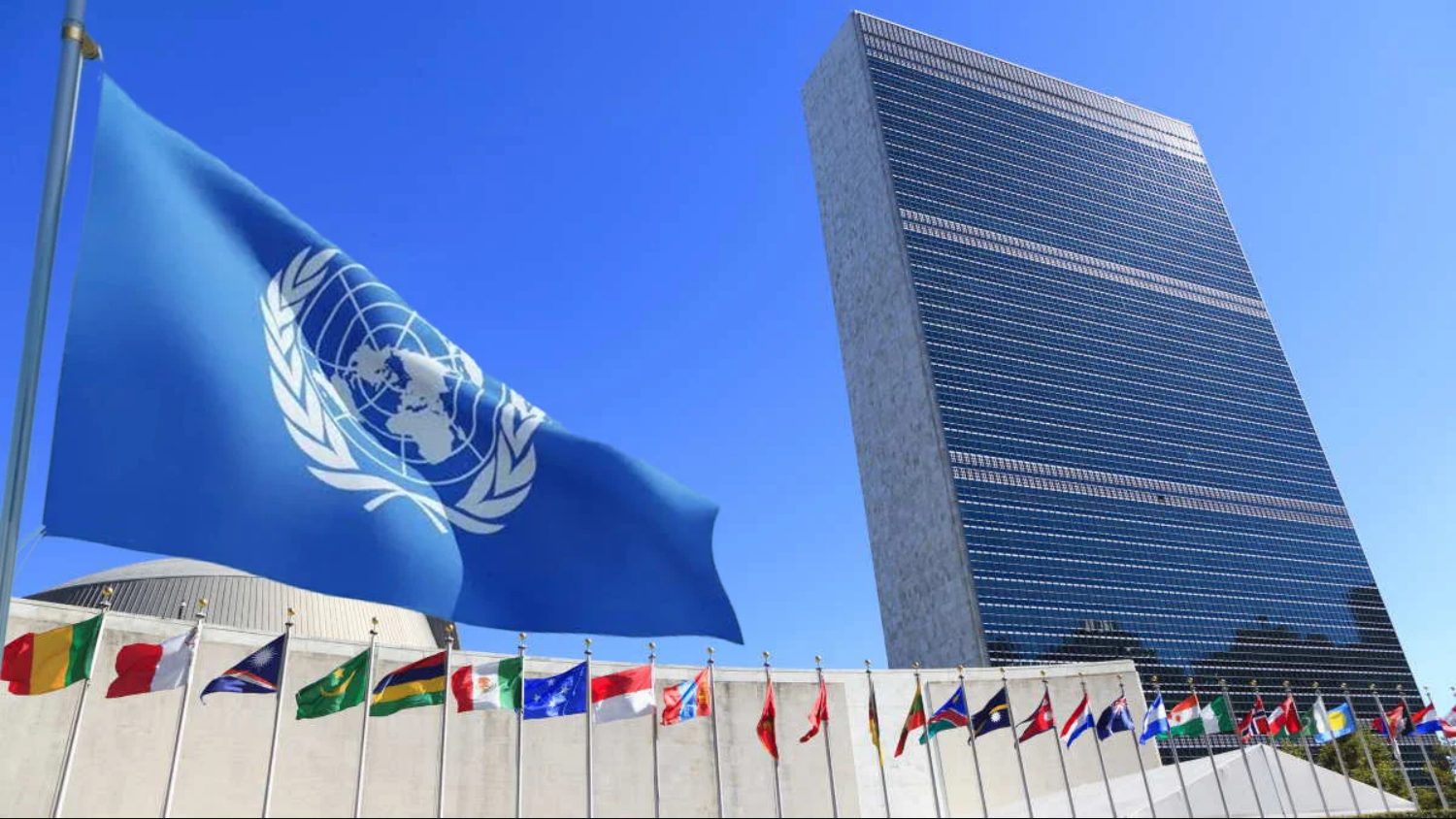
As the saying goes: “If you are interested in the history of a country, then visit its museums! If you are interested in the current state of a country, then walk through its bazaars! If you are interested in the future of a country, then look at its youth!” Indeed, the future is in the hands of the youth...

The competition reveals the strongest
On 25 October, the Institute of International Relations of the Ministry of Foreign Affairs of Turkmenistan held a competition among students and graduate students of the Institute in honor of UN Day. The competition was organized by the “Young Lawyers” research group of the “International Law and Comparative Law” Department of the “International Law” Faculty.
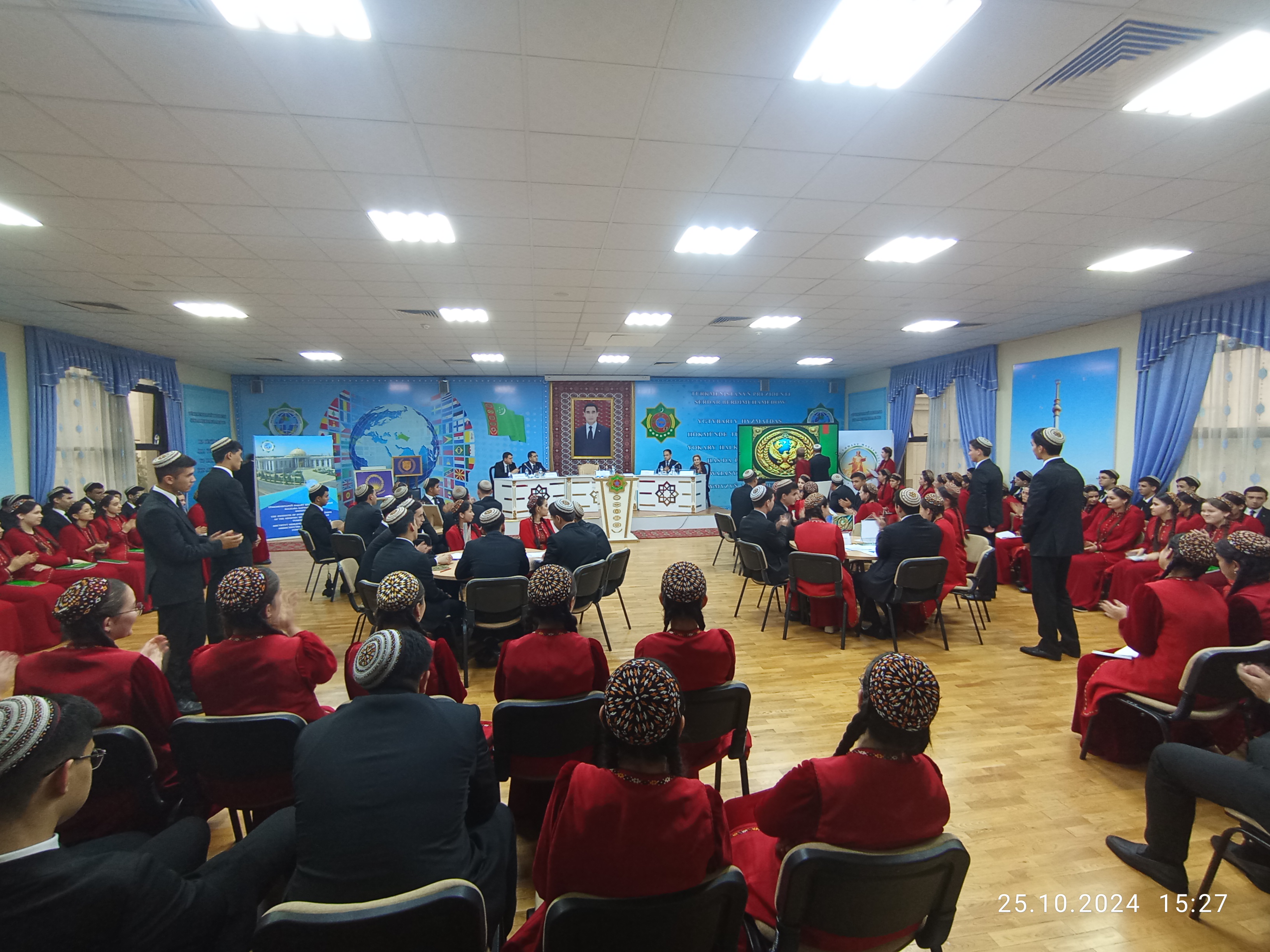
Teams of 8 talented undergraduate and graduate students selected from four faculties of the Institute (International Relations, International Law, International Economic Relations, International Journalism) took part in the competition. The participants demonstrated their abilities in a competition consisting of 4 conditions.
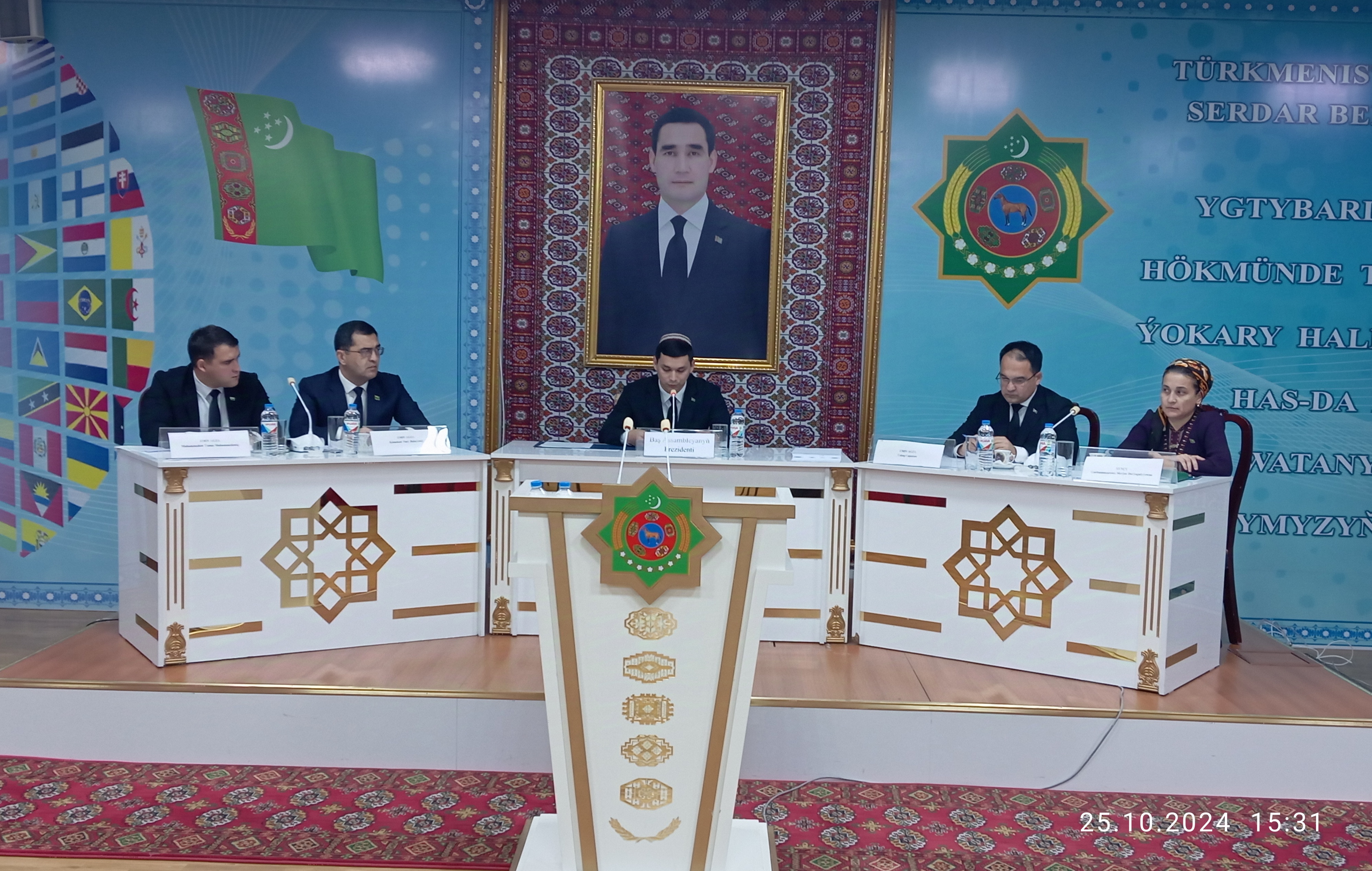
Three jury members and one instructor selected by the organizers as an observer evaluated the intense competition. The Deputy Ombudsman of Turkmenistan, representatives from the Institute of State, Law and Democracy of Turkmenistan as well as the Department of International Organizations of the Ministry of Foreign Affairs of Turkmenistan participated as jury members.
The 1st condition - knowledge and reaction

In the 1st condition, the teams were asked 10 test questions related to the UN, its Charter and the structures of the Organization. The teams were given 30 seconds for each question. Thus, within 5 minutes, the participants tested their knowledge at a fast pace.
The 2nd condition - presentation of state symbols
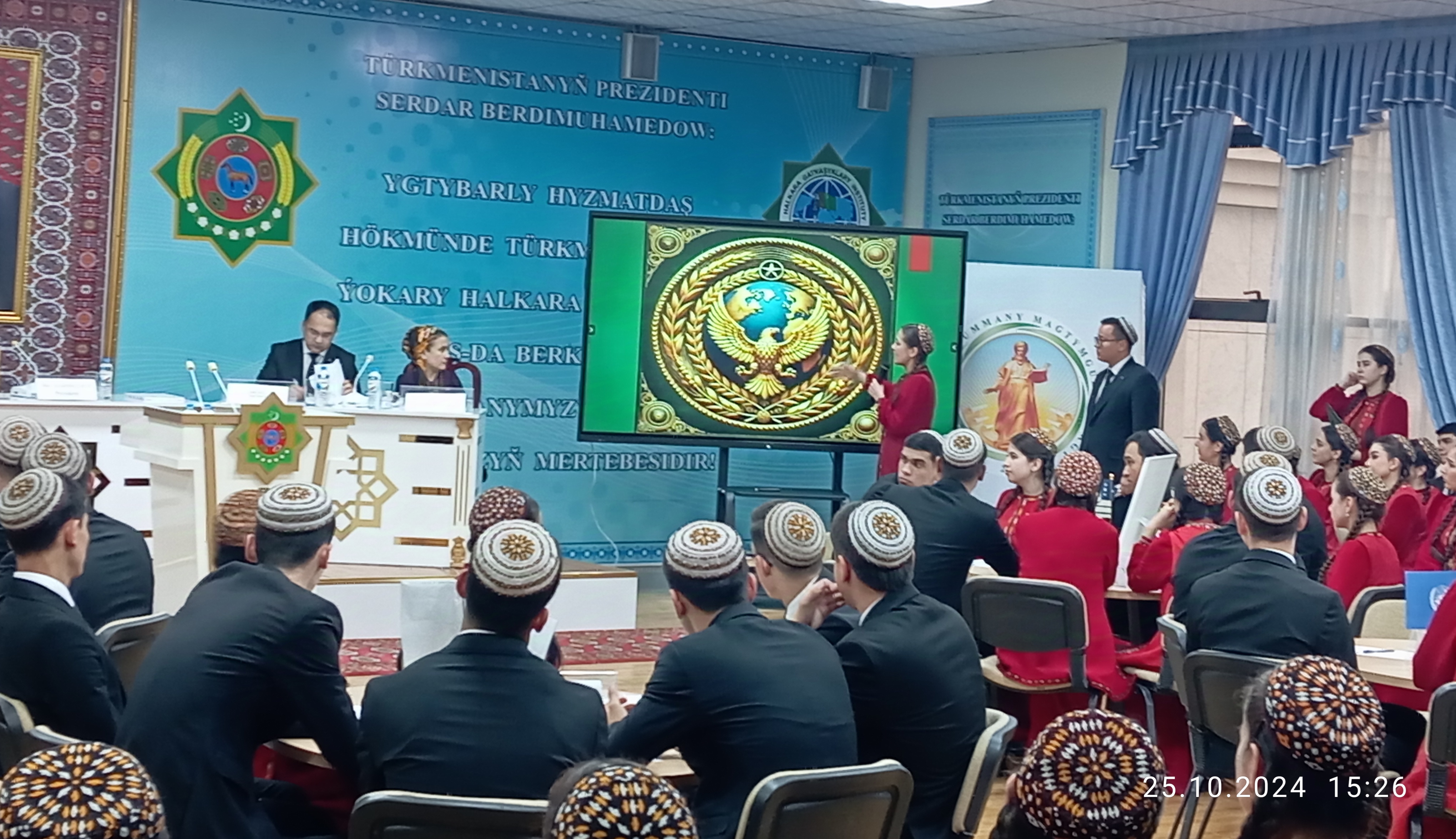
In this condition, the organizers assigned each team names of states (fictitious) related to the field of study (2 days before the competition for preparation): international journalists - the state “Pressia”; international economists - the state “Calcuccia”; future diplomats - the state “Diplomatia”; international lawyers - the state “Jurissia”.
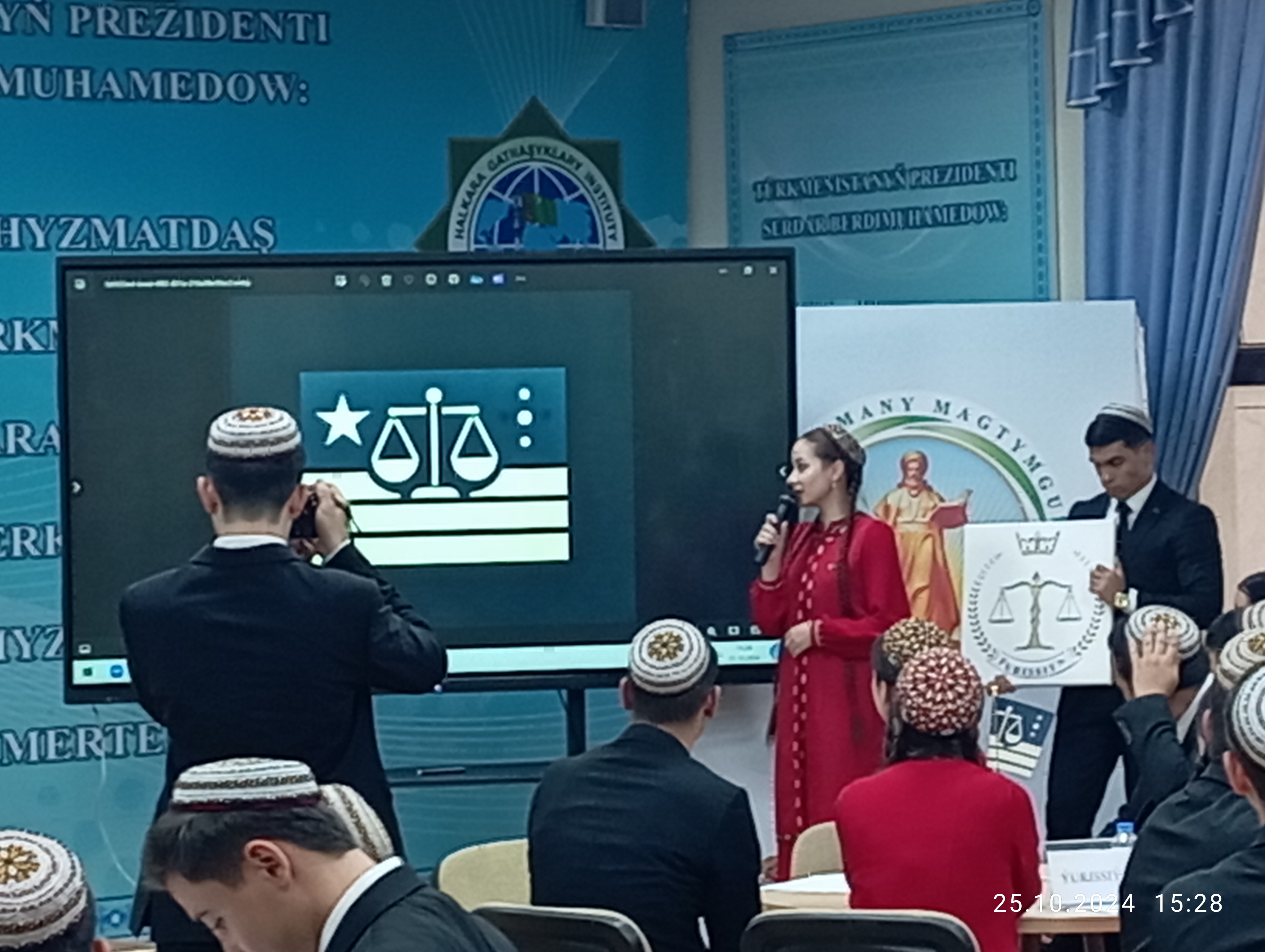
The teams prepared images of the state symbols - flag and coat of arms of their country - and presented them to the jury members and participants of the competition.
The 3rd condition - the questions regarding the accession of states to the International Conventions on Customs and Migration
As the title suggests, in the 3rd condition, the teams made proposals for the accession of their states to the Conventions on International Customs and Migration. Each team member who took to the podium detailed their state's position on the issue.
The 4th condition - knowledge of the flags of the countries (geography and history knowledge are required)
The last condition was also one of the most interesting. The participants' knowledge of such disciplines as geography and history was needed here. The teams, noting the names of the countries whose flags were displayed on the screen, presented their answers to the jury members.

Results and success
The jury members closely monitored the completion of each condition and, according to the results obtained, announced the winners of the competition. As a result, the talented students and graduate students from the faculty of “International Law” demonstrated the highest results and were awarded the 1st place. Students and graduate students of the faculty of “International Economic Relations” with a small gap took the 2nd place.
At the end of the competition the organizers presented all the winners with certificates of honor and memorable gifts.

Any competition is a motivation, but the main goal is to prepare specialists in international relations, professionals in their field.
Seyli ARYSHOV

